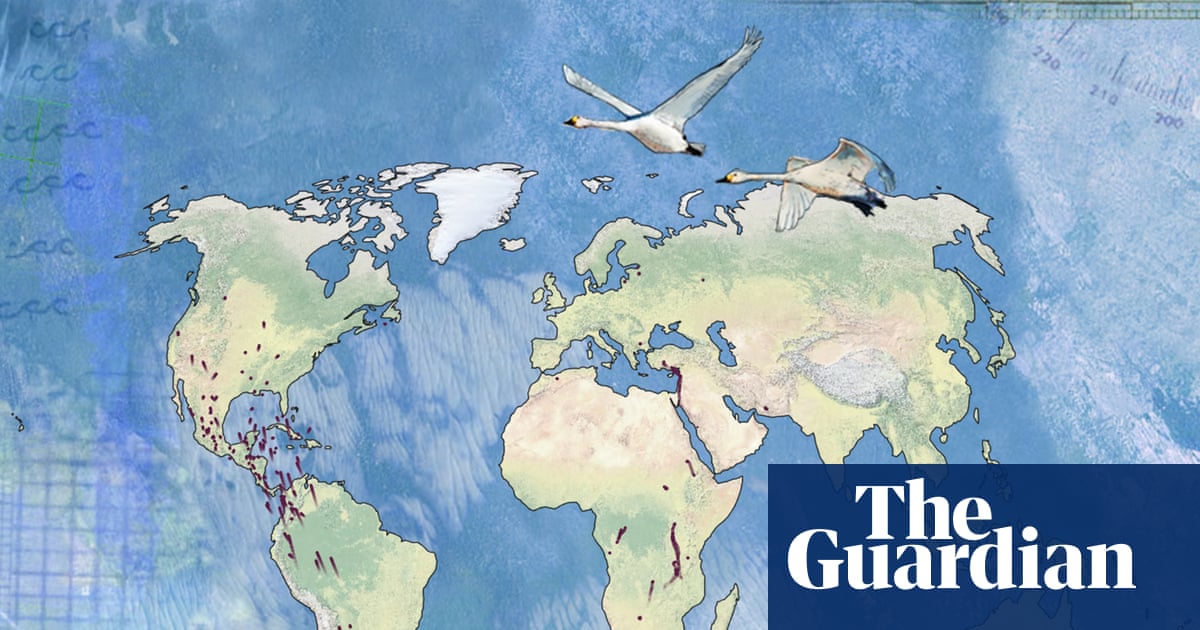
"As storm-chasing seabirds, Desertas petrels seek out hurricanes that draw deep-sea creatures to the surface. Only about 200 pairs remain, although the population is stable. Each bird is no bigger than a pigeon and they all breed on a single deserted island off the west coast of north Africa, fanning out across the Atlantic Ocean to forage. Among the 35 birds that have been tracked by GPS is Marlo, which was born on Bugio Island and tagged after returning there in 2019."
"Marlo is part of a pair bonded for life, and he and his partner reunite with a flurry of excitement after months apart, preening and calling to each other. The parents raise one chick as a tag team, doing long shifts at sea for up to three weeks at a time, covering distances of up to 7,400 miles (12,000km). They gorge on seafood and regurgitate it as oil for their chick."
Desertas petrels are small, storm-chasing seabirds that breed exclusively on a single deserted island, Bugio, off northwest Africa, with roughly 200 pairs remaining. GPS tracking of 35 birds, including Marlo, shows zigzag, transatlantic foraging journeys across Europe, north Africa, North America, and down to northern South America. Pairs mate for life and cooperate to raise a single chick, alternating at-sea foraging shifts of up to three weeks and traveling as much as 7,400 miles (12,000 km) during breeding season. Adults feed heavily at sea and regurgitate oily seafood for chicks while spending most of their lives over international waters.
Read at www.theguardian.com
Unable to calculate read time
Collection
[
|
...
]